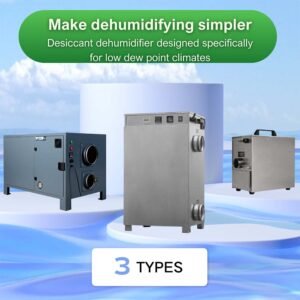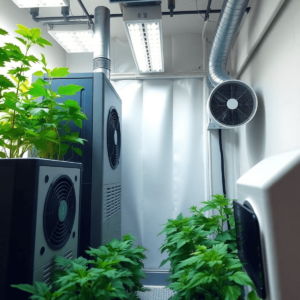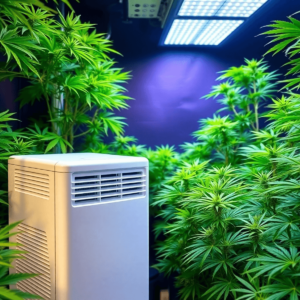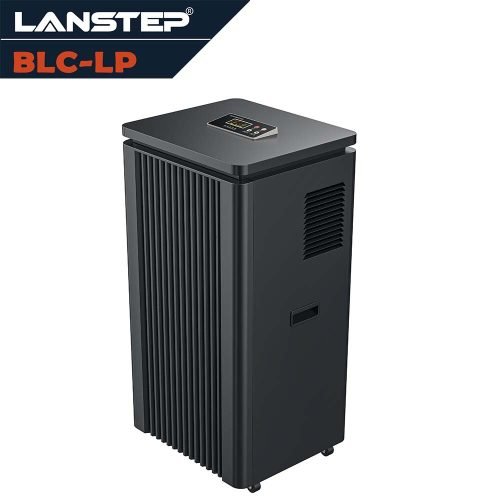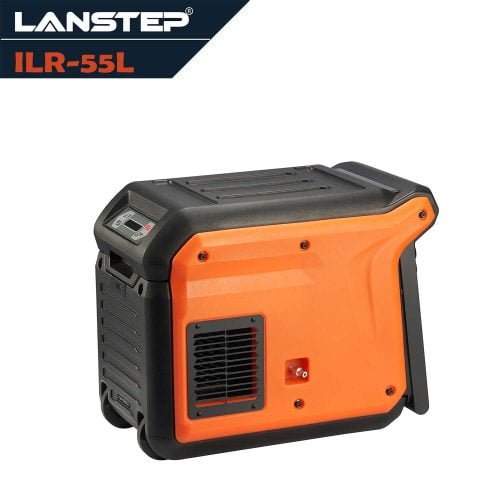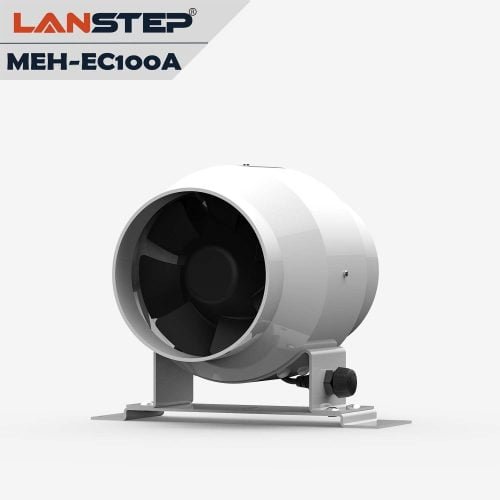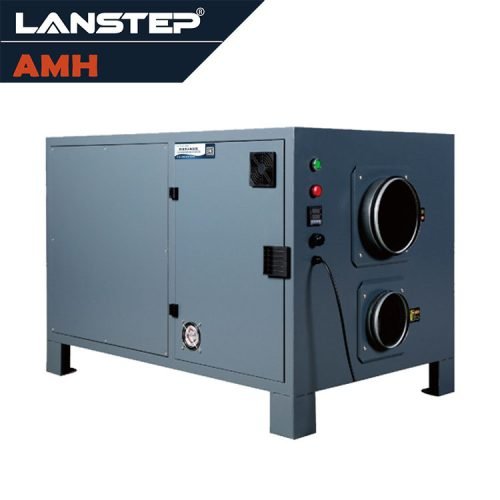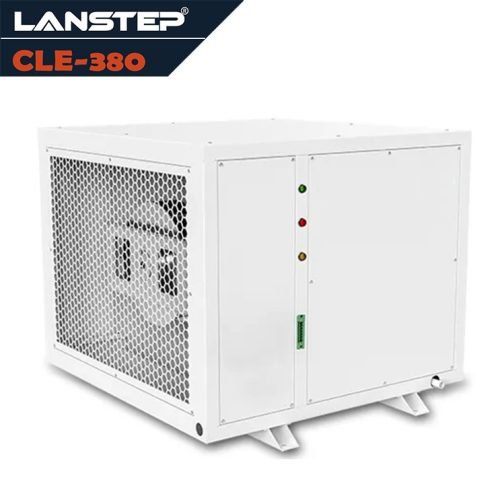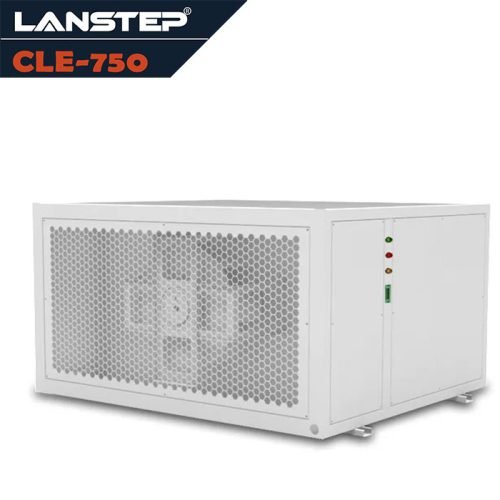Introduction
Choosing the right dehumidifier is crucial for maintaining a healthy and comfortable indoor environment. High humidity levels can lead to numerous problems, including mold growth, musty odors, and damage to furniture and electronics. By understanding your dehumidification needs, you can effectively tackle these issues and enhance your living space.
Common Issues Caused by High Humidity:
- Mold and Mildew: Excess moisture promotes the growth of mold and mildew, which can trigger allergies and respiratory problems.
- Structural Damage: Over time, high humidity can deteriorate building materials such as wood and drywall.
- Increased Allergens: Dust mites thrive in humid conditions, exacerbating allergy symptoms.
- Discomfort: Humidity makes it harder for sweat to evaporate from your skin, leading to discomfort and restlessness.
This comprehensive guide will help you understand how to choose a dehumidifier that meets your specific needs, ensuring a healthier home environment.
For instance, the application of LANSTEP AMD Series Portable Dehumidifier in a museum in Bosnia and Herzegovina illustrates how effective humidity control can protect valuable artifacts from moisture damage.
Understanding Humidity Levels
Recognizing signs of high humidity is crucial for maintaining a comfortable and healthy home environment. Common indicators include a persistent musty odor, visible mold or mildew growth, condensation on windows, and a general feeling of dampness or stickiness in the air. These symptoms not only affect comfort but can also lead to structural damage and health issues over time.
Measuring Humidity Effectively
To measure humidity effectively, a hygrometer is your best ally. This device provides accurate readings of indoor humidity levels, helping you monitor and adjust as necessary. Place the hygrometer in different areas of your home to identify spaces with higher moisture levels.
Maintaining Ideal Humidity Levels
Maintaining ideal humidity levels is essential throughout the year:
- Spring/Summer: Aim for 30-50% to prevent excess moisture that fosters mold growth.
- Fall/Winter: Keep it between 30-40% to avoid dry skin and respiratory discomfort.
These recommended ranges help ensure comfort while safeguarding against potential damage caused by both excessive and insufficient humidity. Monitoring these levels allows you to take proactive measures, such as adjusting your dehumidifier settings or improving ventilation, ensuring an optimal indoor atmosphere year-round.
Note: For those involved in specific industries like cannabis cultivation, CLE Series Dehumidifiers can provide energy-saving, deep dehumidification solutions that maintain ideal humidity levels crucial for high-quality cannabis production.
Types of Dehumidifiers
Choosing the right type of dehumidifier is crucial for addressing your specific humidity challenges. Each type offers unique features tailored for different environments and needs.
Overview of Different Types of Dehumidifiers
1. Compressor Dehumidifiers
Often referred to as refrigerant dehumidifiers, these are highly efficient in warm conditions. They function by drawing moist air over a refrigerated coil, causing water vapor to condense and collect. Ideal for large areas, they efficiently manage high humidity levels. Despite being energy-efficient, noise can be a consideration due to the compressor mechanism.
2. Desiccant Dehumidifiers
Utilizing moisture-absorbing materials, desiccant dehumidifiers excel in cooler environments where compressor models might struggle. These units work by passing air through a rotating wheel filled with absorbent material, then heating the material to release and collect the water vapor. Known for their quiet operation and cost efficiency, they are perfect for spaces where noise reduction is key.
3. Peltier (Thermo-electric) Dehumidifiers
Suitable for small spaces, these units employ a thermoelectric cooling method to condense moisture from the air. While not as powerful as compressor models, they provide a silent operation with no moving parts. Their capacity limitations make them ideal for minor humidity issues or personal use scenarios.
Understanding the Mechanisms Behind Each Type
Understanding how each type works will help you choose one that fits your needs:
Compressor Dehumidifiers
- Efficiency in Warm Conditions: These units perform best in temperatures above 65°F, making them optimal for summer months.
- Suitability for Large Areas: With capacities often exceeding 50 pints per day, they handle expansive spaces effortlessly.
- Noise Level Considerations: The presence of a compressor means these units produce noticeable sound; placement can help mitigate this concern.
Desiccant Dehumidifiers
- Mechanism of Moisture Absorption: Air passes through an absorbent material that holds moisture until it is heated away.
- Effectiveness in Cold Environments: Operate efficiently even at low temperatures without frost buildup on coils.
- Cost Efficiency: Although initial costs may be higher than compressors, operational savings from reduced energy use can add up.
Peltier (Thermo-electric) Dehumidifiers
- Ideal Usage Scenarios: Best suited for small rooms like bathrooms or closets where space is limited.
- Capacity Limitations versus Efficiency: Limited to around 20 ounces per day, yet highly energy-efficient and quiet.
Selecting the Right Dehumidifier Based on Your Needs
These insights will guide you towards selecting a dehumidifier that meets your needs while maintaining indoor comfort effectively.
For instance:
- If you’re looking for an effective solution for your grow room, consider the CLA-240L-CropDry Max Grow Room Dehumidifier.
- If you need a continuous run capability for industrial use, the ILA-168L-PlantGuard Pro Standing Dehumidifier could be an ideal choice.
In addition to choosing the right dehumidifier type, enhancing your duct system with INA-EC200-Eco Duct Booster Fan can further improve airflow and humidity control throughout your space.
Sizing and Capacity Considerations for Dehumidifiers
Choosing the right size dehumidifier is crucial for maintaining optimal indoor humidity levels. The effectiveness of a dehumidifier depends on its capacity, making it essential to match the unit’s size with the area you intend to dehumidify. Consider these guidelines to select an appropriate model:
1. Small Spaces (≤500 sq ft)
Ideal for small rooms or bathrooms, dehumidifiers in this category typically have a capacity of 20-22 pints. These units are compact and suitable for minor humidity issues.
2. Medium Spaces (up to 800 sq ft)
For medium-sized areas like living rooms or larger bedrooms, a dehumidifier with a 30-pint capacity is often recommended. This provides sufficient power to manage moderate moisture levels.
3. Large Spaces (≥40 pints)
Large-capacity models such as LANSTEP’s commercial size dehumidifiers are designed for basements or other expansive spaces that experience significant dampness. They efficiently handle extensive moisture removal, ensuring comfort across larger areas.
Tank size also plays a vital role in your choice. A larger tank requires less frequent emptying but can affect portability due to increased weight when full. Conversely, smaller tanks need more frequent attention, which might be inconvenient if continuous operation is desired.
Additional factors influencing your decision include the number of occupants and windows in the space. More people and windows generally result in higher humidity levels, necessitating a unit with greater capacity.
Understanding these variables aids you in making an informed decision on how to choose the right dehumidifier. By aligning your needs with the correct sizing, you’re better equipped to maintain an ideal indoor environment.
For instance, if you’re looking for an efficient dehumidifier for cannabis grow rooms, the CLE500 model removes up to 500 pints per day ensuring optimal humidity control for healthier plant growth. Alternatively, if you need specialized moisture control for warehouses, LANSTEP’s BLA-L model offers affordable prices coupled with efficient moisture control tailored to meet unique warehouse needs.
Energy Efficiency and Operating Costs of Dehumidifiers
Selecting an energy-efficient dehumidifier, like the CLE210 Efficient Grow Room Dehumidifier, can significantly impact your operating costs and environmental footprint. Energy efficiency not only reduces utility bills but also prolongs the lifespan of your unit by minimizing wear and tear. The CLE210 model, for instance, is designed exclusively for grow rooms and can remove up to 210 pints of moisture per day, making it ideal for maintaining optimal humidity levels while being energy efficient.
Benefits of Choosing Energy-Efficient Models
- Cost Savings: Efficient models consume less electricity, leading to lower monthly energy bills.
- Environmental Impact: Reduced energy consumption translates to a smaller carbon footprint.
- Enhanced Performance: These models often come with advanced features like programmable humidistats and auto-shutoff functions, which optimize their operation.
Comparison Between Different Types
It’s crucial to evaluate the operating costs of dehumidifiers from various categories:
- Compressor Dehumidifiers: Generally more energy-efficient in warm conditions due to their ability to remove large amounts of moisture quickly. However, they might be noisier, which could influence your choice if noise levels are a concern. You might want to consider using EC Motor Inline Duct Fans alongside these dehumidifiers for better ventilation and reduced noise.
- Peltier (Thermo-electric) Dehumidifiers: Typically less efficient compared to compressors, especially in larger spaces or more humid environments. They are quieter and better suited for small areas but may lead to higher operating costs due to longer running times. If you’re looking for quiet operation, exploring the quietest inline fan options could be beneficial.
When choosing a dehumidifier, consider both its initial cost and long-term operating expenses. Investing in an energy-efficient model often results in savings that justify the initial expenditure over time. Additionally, if you’re looking for whole-house dehumidifiers, it’s important to ensure that they are compatible with your existing ventilation system.
Moreover, understanding the concept of VPD vs static humidity can greatly enhance your strategy if you’re using these appliances for specific purposes like cannabis growth.
Features That Enhance Usability in Dehumidifiers
Choosing a dehumidifier with the right features can significantly impact its ease of use and effectiveness. Among the features of dehumidifiers, certain elements stand out for their ability to enhance user experience and functionality.
1. Humidistats
These are indispensable for maintaining your desired humidity levels. A humidistat allows you to set and automatically maintain specific humidity settings, ensuring optimal comfort without constant manual adjustments. This feature is particularly useful in spaces with fluctuating moisture levels, providing peace of mind as it adjusts the unit’s operation based on ambient conditions.
2. Continuous Drainage Options
Convenience is key when dealing with frequent water collection. Many models offer continuous drainage systems, allowing you to connect a hose directly from the dehumidifier to a drain outlet. This setup eliminates the need for regular emptying of the water tank, making it ideal for locations where the unit operates continuously or in high-humidity areas.
Incorporating these features into your decision-making process can save time and effort while optimizing your dehumidifier’s performance. Models equipped with such usability enhancements are especially beneficial in settings requiring consistent and long-term moisture control, like basements or large living areas.
If you’re considering a business cooperation to enhance your product offerings in this field, you might want to explore opportunities with LANSTEP, a renowned manufacturer of dehumidifiers and duct fans. Their expertise could be a valuable asset in optimizing your product range.
Budget Considerations When Choosing a Dehumidifier
Choosing the right dehumidifier within your budget requires a keen eye on pricing and value. Mini units, which are perfect for smaller spaces, generally range from £30 to £60. These models are often compact and designed for portability, yet they offer limited capacity.
For more substantial dehumidifying needs, larger units priced between £100 and £250 are recommended. These models typically provide higher capacity and additional features such as adjustable humidistats or continuous drainage options.
Finding reliable brands is crucial for durability and performance. Look for manufacturers with strong reputations in the market, as this often correlates with product longevity and efficiency. Brands known for their robust dehumidifiers include Frigidaire, Honeywell, and Meaco.
When assessing how to choose the right dehumidifier, consider the comprehensive guide provided by industry experts that aligns features with your budget constraints. Selecting a durable unit ensures long-term benefits without frequent replacements.
In addition to dehumidifiers, you might also want to explore other options like inline duct fans, which can help improve ventilation in your space. For instance, MSA-EC300Z-11.5 inch EasyConnect Duct Inline Duct Fans are reliable and efficient options that can effectively remove heat and odor from grow tents or other confined spaces.
Safety Concerns with Dehumidifiers
When selecting a dehumidifier, safety concerns are paramount. Faulty models can pose significant fire risks, making it essential to approach your purchase with caution.
1. Potential Fire Hazards
Faulty units may overheat, leading to dangerous situations. Ensure that any model you consider has robust safety features to mitigate these risks.
2. Recalls and Safety Ratings
Always check for any recalls on dehumidifiers to avoid purchasing a model with known issues. Researching safety ratings provides additional assurance; look for units that have been independently tested and certified by recognized bodies.
Prioritize brands with a reputation for quality and reliability. This attention to detail not only enhances safety but also contributes to long-term performance and peace of mind. A well-chosen dehumidifier safeguards your home while effectively managing humidity levels.
Conclusion
Choosing the right dehumidifier involves careful consideration of various factors tailored to your specific needs. Assessing personal requirements is crucial, as it helps in selecting a model that aligns with the size of your space, prevailing humidity levels, and budget constraints. Recognizing the signs of high humidity in your home and understanding the different types of dehumidifiers — such as compressor, desiccant, and Peltier models — can guide you in making an informed decision.
Maintaining ideal humidity levels, typically between 30-50%, promotes a healthy and comfortable living environment. Regular monitoring and adjusting settings according to seasonal changes ensure long-term benefits. Investing in a reliable dehumidifier from trusted brands can enhance durability and performance, further safeguarding your home against moisture-related issues.
In addition to using a dehumidifier, incorporating silenced inline fans with EC motors into your ventilation system can significantly improve air circulation while maintaining a noise-free environment. These fans provide efficient airflow which is essential for optimal humidity control.
With this comprehensive guide on how to choose the right dehumidifier, you’re well-equipped to make a choice that enhances comfort and protects your living space.
FAQs (Frequently Asked Questions)
How do I determine my dehumidification needs?
To determine your dehumidification needs, assess the humidity levels in your space using a hygrometer. Signs of high humidity include condensation on windows, musty odors, and mold growth. Consider the size of the area, the number of occupants, and any sources of moisture.
What are the different types of dehumidifiers available?
The main types of dehumidifiers include compressor dehumidifiers, which are efficient in warm conditions; desiccant dehumidifiers, which work well in cold environments; and peltier (thermo-electric) dehumidifiers, which are suitable for smaller spaces. Each type has its own advantages based on usage scenarios.
How can I choose the right size of dehumidifier for my space?
Choosing the right size involves calculating the capacity needed based on the area to be dehumidified. For small areas (≤500 sq ft), a unit with a capacity of about 30 pints is recommended; for medium areas (up to 800 sq ft), consider models around 40-50 pints; and for larger spaces (≥40 pints), opt for units that can handle more than 50 pints.
What features should I look for in a dehumidifier?
Essential features to enhance usability include humidistats that allow you to set desired humidity levels and continuous drainage options for hassle-free operation. These features can significantly improve convenience and efficiency in maintaining ideal humidity levels.
What should I consider regarding energy efficiency and operating costs?
When selecting a dehumidifier, consider energy-efficient models that can help reduce operating costs. Compare energy consumption between different types, such as compressor versus peltier models, as this can impact your electricity bills over time.
Are there safety concerns associated with using dehumidifiers?
Yes, there are safety concerns with dehumidifiers, particularly regarding fire risks associated with faulty models. It is important to check for recalls and safety ratings before purchasing a unit to ensure it meets safety standards.

